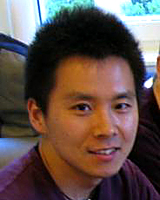KTH scientists will fix your hairdo
Do you often have a so-called Bad hair-day? Are you affected by static hair or other mishaps when you want to fix your hair in the morning? Soon, these problems will become a thing of the past. New research at KTH show us how the hair is affected by the interaction between the hairs themselves. This provides a greater understanding of bio fibres, which in turn can result in, among other things, new hair products.

Previously there has been a lot of research conducted as to what the surface texture of hair looks like, but now scientists have also begun to look at how hair behaves when interacting with other hairs. As a result, researchers have gained a greater understanding of how friction and other forces between hairs affect the hair, and how for example bleaching affects the hair.
“The research findings are proof that it is possible to measure forces on bio surfaces, i.e. at very small distances between two objects. This means that it will be possible to try and get answers about how well new hair products, such as a hair conditioner, works. But the research is also relevant for other areas, such as textiles and the paper industry,” says Mark Rutland.
He is a professor of surface chemistry at KTH, and says that in the textile industry, wool has many similarities with human hair, which makes the research relevant. In the wool industry, the objective is to develop wool that does not shrink and which can be ironed. As for the paper industry, it will be studying the linkages between paper fibres in an attempt to strengthen them.

“It means that paper can be made thinner, and still maintain its strength. In this way, the paper industry can save money in the manufacture of paper,” says Mark Rutland.
He adds that a further use of research results is in computer games and animated films. Developers and filmmakers have long wrestled with the problem of being able to reproduce human hair in a natural way.
“Our research can be used to model hair, it shows us how the hair looks like, interacts and works,” says Mark Rutland.
In addition to Mark Rutland, the research project also includes the researchers Hiroyasu Mizuno from KTH and Gustavo Luengo from L’Oréal in Paris. It is these two people along with access to KTH’s advanced nanolab and an atomic force microscope that has made the research possible, according to Mark Rutland.
For more information, contact Mark Rutland at 08 - 790 99 14 or mark@kth.se.
Peter Larsson

